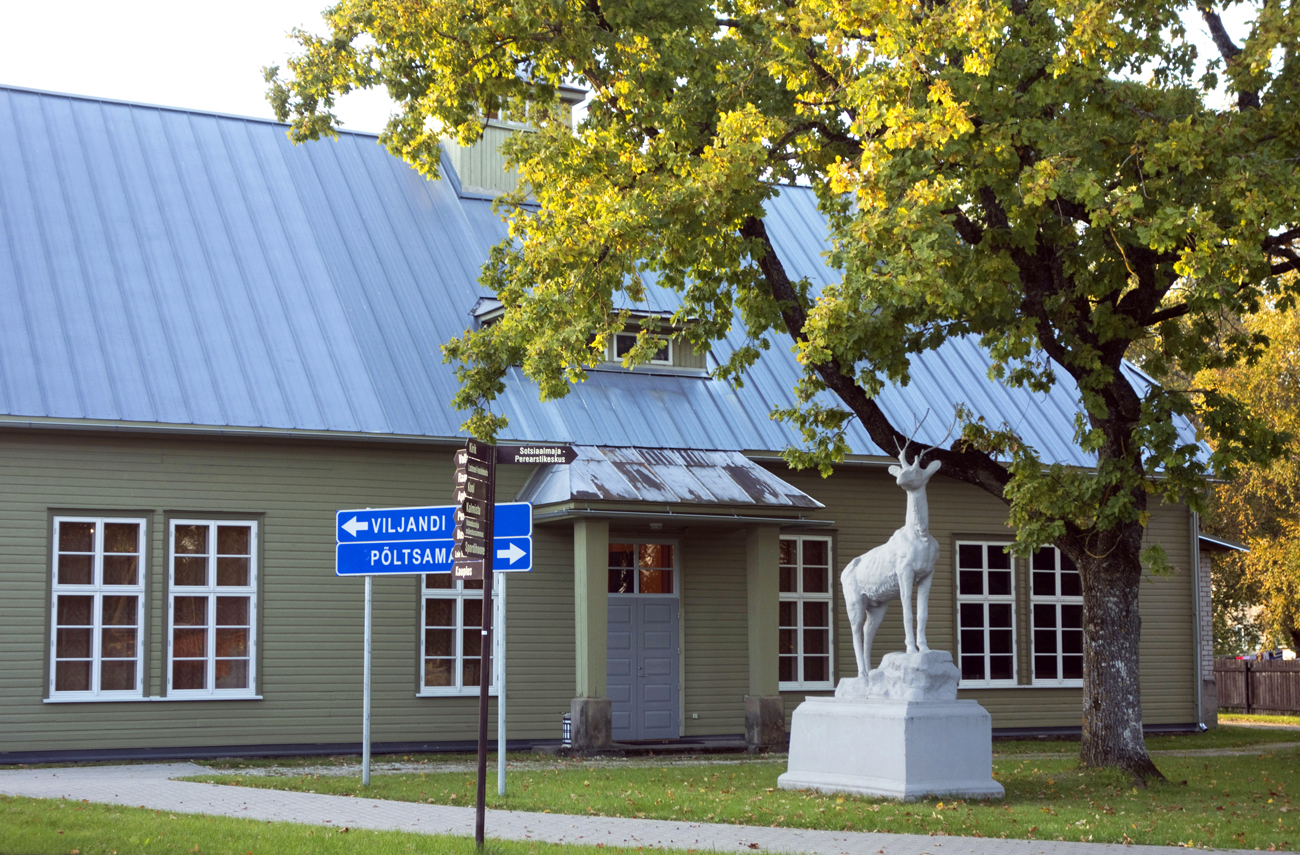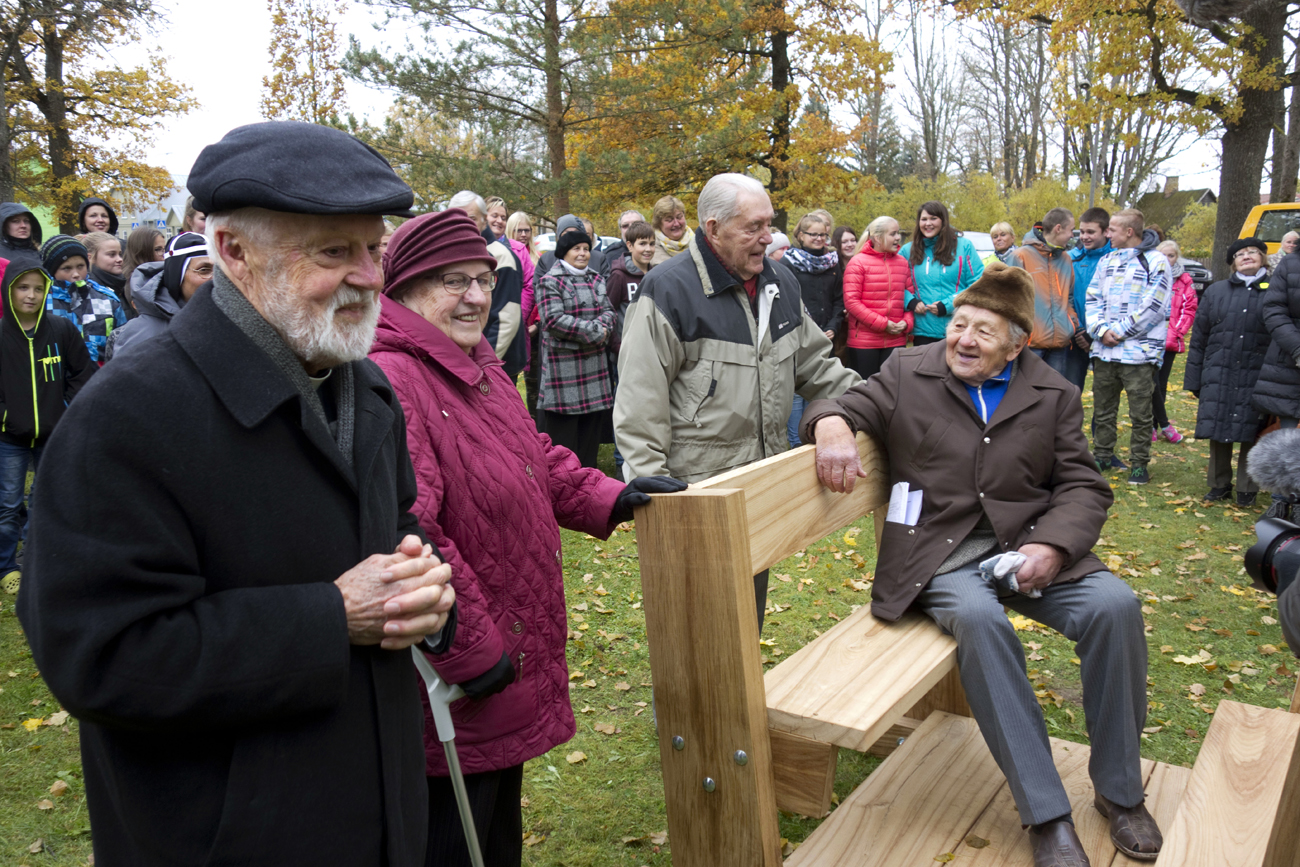Kolga-Jaani
Kolga-Jaani is one of the places which seems „bigger on the inside than on the outside” as the saying goes. The most famous person in Kolga-Jaani throughout ages has undoubtedly been Villem Reiman. For a long time the name of Villem Reiman was synonymous with Kolga-Jaani.
Ants Tooming, Pastor of Kolga-Jaani congregation in 2000–2010 and a member of Villem Reiman Collegium writes:
„Villem Reiman (1861–1917), a central figure of the Estonian national movement, a journalist, a historian, an ardent promoter of national awareness, a social and cultural activist, an honorary alumnus of the Estonian Students’ Society and, above all, one of the men who laid the foundations of the Estonian Evangelical Lutheran Church worked in Kolga-Jaani as a pastor in1890–1917.
By the beginning of the 20th century Reiman had become an authority with much experience, and he was willing to take responsibility for introducing changes in the matters that were rooted and fixed in people’s subconsciousness. One of these changes was a thorough reconstruction of Kolga-Jaani Church.
During the Livonian War in about 1578 people had sought shelter in the church. The legend has it that while some hunters were making a fire on a hilly slope in the thick wood they suddenly discovered that they were standing on the vaults of a church. Even in 1778 an ox yoke on Ottimatsi Farm in the Village of Odiste was said to have been made of a birch that had grown on the vaults of the church. This was taken to the Estonian National Museum at Raadi, where, unfortunately, it was destroyed in a fire.
In the early 20th century Villem Reiman decided to transform the appearance of the church. Owing to his initiative a thorough renovation was made in 1903: the windows were enlarged, the vestry was rebuilt. A stained glass altarpiece Come unto me was commissioned from the workshop of Ernst Tode in Riga (1903). The more than one-hundred-year-old stained glass altarpiece, which is unique in Estonia, has been preserved exceptionally well. The nearest analogy can be found in a window niche behind the altar in the Riga Cathedral: its stained glass is amazingly similar to that in Kolga-Jaani.”
And yet and yet!
In Tallinn, there are three large and four small stained glass windows in the corner tower of the Estonian Bank at 11, Estonia Blvd., the former bank of the Credit Society of the Estonian Knighthood, which houses the bank museum today. They were made in the workshop of the Riga master Ernst Tode in 1904. They have survived in their original form for more than a hundred years and were not destroyed during the Russian bombing of the city on 9 March 1944. This is high-quality work!
The story of Ants Tooming continues:
„During the renovation of Kolga-Jaani Church a new pulpit was built on the right-hand side. The church became more spacious and the pastor preaching from the pulpit was now visible to the entire congregation. The loan taken for the renovation was paid back already in 1906. It was an enormous undertaking which is not possible today.
Reiman wanted to improve life in Kolga-Jaani and to bring more people to the village. Until 1912 Kolga-Jaani had a church, a parsonage and some ancillary buildings, surrounded by the fields of the ecclesiastical manor, and some homesteads. For five years Reiman argued with the church council until on 27 November 1912 it was decided to allot 65 plots for constructing houses.
Thus during Reiman’s lifetime many houses were built in the neighbourhood of the church. It was also thanks to Villem Reiman that economic and cultural cooperation developed in Kolga-Jaani Parish. He was not only a cultural figure and a pastor, but he was also an enthusiastic businessman. Due to his activity a village emerged so that Kolga-Jaani Church stands literally in the middle of the village.”
(From the Estonian church calendar 2003.)
Near the church there is a building with a remarkable history – Villem Reiman’s community house. This early 20th century building, which had fallen into disrepair, was renovated by Hovard Nurme from Kolga-Jaani, the heart and soul of the village community, at his own expense. He has been and still is involved in many projects.

While driving around with Kalevi Kaur, the then mayor of Kolga-Jaani Parish, we were pleasantly surprised by his knowledge of the surroundings. He knew every house and its inhabitants, he had a good overview of cultural life, and forests and fields, and he did not complain and whine.
When you meet such enterprising men who respect their environment and community you think: yes, this is the Estonia we wanted!
Villem Reiman – „Signs of Time”. Postimees, 21 September 1910
The only thing that would help us overcome the hardships of today and the menace of the future is a clear understanding of what is needed so that our people might lead peaceful lives; unceasing cultural work despite setbacks or difficulties; a strong sense of community so that the weak support the weak and make each other strong; self-initiative which must show each time the state and the municipality let us down. Then we may reasonably hope that we shall be freer and more prosperous!
Riina Roose, 2015

On 14 October 2016 we opened a prayer bench next to the Kolga-Jaani vicarage.
This prayer bench is dedicated to two distinguished men of the area, father and son, ALEKSANDER VAHER and VELLO SALO or ENDEL VAHER – both serving their homeland and its people.
Because of the terrible events in European history the son does not have his old family name since 1945 and the father was killed by the enemy in 1944. It is a typical story in Estonia and its history.
ALEKSANDER VAHER was a long-time head of Lalsi primary school and of the regional unit of the Defence League. He died in 1944, for the honour and freedom of his homeland. His motto was ALWAYS READY TO DEFEND THE HONOUR OF MY HOMELAND. Let us this be our motto as well.
Aleksander Vaher’s son VELLO SALO is one among the few who links our country and the spirit of our people with the wider world. He was born on 5 November 1925 in Lalsi, but by God’s will he has become a role model and support to many people across the world.
Father Vello is a Catholic clergyman, historian, translator and publisher and has various titles of honour. However, the most important title of honour a human being can have is to be known as a dignified person. This honour was granted to Father Vello by God himself. We certainly find joy and support in this.


The bench was blessed by Father Vello Salo in the presence of the sisters and friends of Pirita Convent, Vello Salo’s sister Eevi Salm and brother Arvo Vaher and plenty of Kolga-Jaani people: schoolchildren, teachers and congregation members.
Accommodation for pilgrims in Kolga-Jaani vicarage
7 beds + mattresses, kitchen, shower.
Contact: Hovard Nurme, Tel. +372 528 9599, hovardnurme@hot.ee;
the priest Peeter Parts, Tel. +372 5568 4711, peeterparts@hotmail.com
